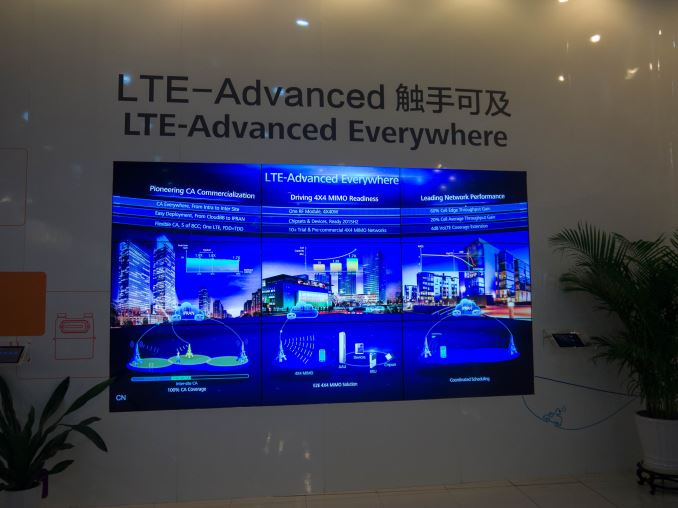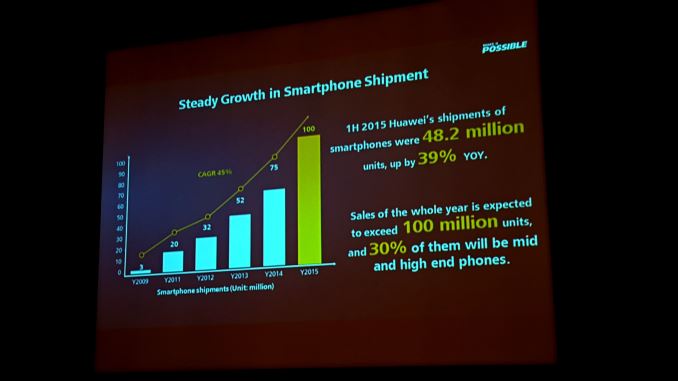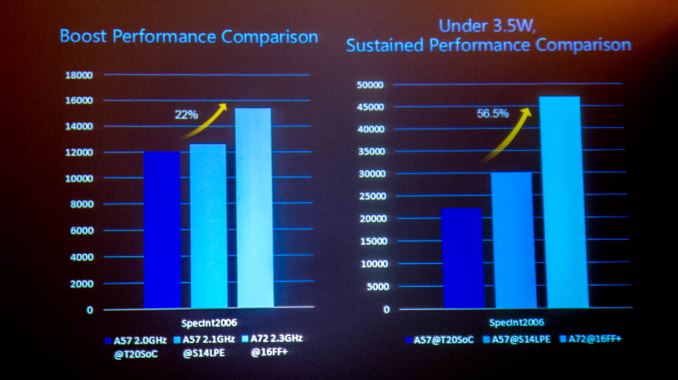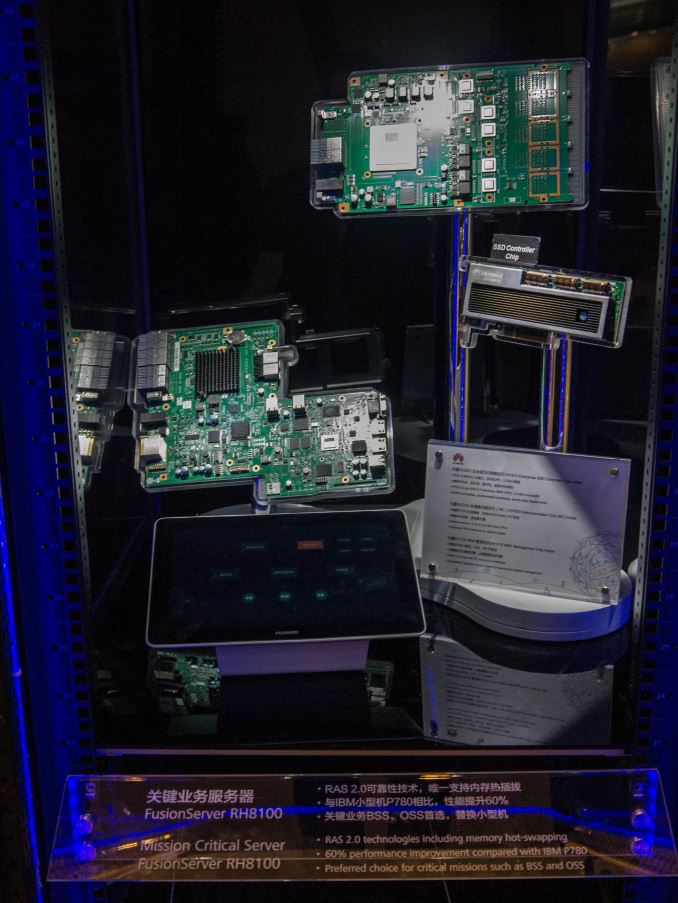China Calling: Huawei’s Media Tour, Kirin 950 and Why We Went
by Ian Cutress on December 4, 2015 8:00 AM ESTFinal Thoughts
All truth be told, when an electronics manufacturer opens up we stand to gain a great deal of insight into how they think and how strategies formulate. Sure, it’s a question of speaking directly to the people that actually make the decisions, otherwise questions and answers never go through the chain. But also as an editor, from my perspective, it is important to understand when you are presented with a standard PR answer and ask the right questions sufficiently in order to get to the heart of what makes a company tick. There will always be things that a company will never tell you, either due to liability or the level of trust they have with you, or there might be some discussions that remain strictly behind closed doors.
As we tell every company we meet, those closed room discussions, despite not directly producing content for us as technical media or analysts, are just as valuable as on-record meetings and can actually be really helpful in understanding perspective or technical details. Even if we do not write about what is said, it enables another layer of conscious or sub-conscious consideration and analysis about the industry for when we write about other topics, helping us translate what we see into the wider picture. Understanding why from a bottom-up perspective is just as important as the top-down, even more-so when looking at trends and directions and being able to educate users and engineers alike.
In that regard, this trip has established a new level of dialogue between Huawei and AnandTech in order for both sides to understand each other more, from our understanding of the markets and devices to their diverse silicon and product portfolio. That rapport and direct line of communication to those who turn the cogs which we did not have before is important, with respect to handsets, silicon, and wider corporate strategy. It is clear that Huawei wants to expand into more markets beyond their standard Chinese base, and has dipped its toe into leading the market with TSMC’s 16nm FinFET+ node in the Kirin 950. The phrase ‘premium brand’ was a common theme throughout our trip, and the numbers back that up. Moving from 3 million handsets in 2009 to 48.6 million in the first six months of 2015 alone means that the investors are all happy, especially given that 30% of those are high-to-mid level devices at a cost of €400 and up. Being partially vertically integrated through its HiSilicon subsidiary allows it to reduce cost, spend on R&D and provide a custom product as long as it is well executed. While this is going on, Huawei’s two other business groups on services and infrastructure account for the other 60% of the company, which are also both benefiting from the HiSilicon synergy.
Huawei does still have several mountains to climb however, this much is obvious. When speaking purely about the handset business, when striving for that premium brand status, its presence in North America is still a way behind the two major players. This stems from several factors including a CDMA licensing and certification issue preventing Kirin chipsets in North American models, but also an issue regarding the perception of some users that will not want to hand over money for a device made by a Chinese-based data company, especially if they cannot pronounce the name. Arguably the first of those issues is easier to crack about CDMA, such that one solution to Kirin might be to produce a die without an integrated modem, similar to Apple, but both of the issues above will have severe implications on Huawei’s ability to expand in the US. The Huawei watch too, as a dip into the wearable space, comes with many variables on style, size, applicability, usefulness, ecosystem, and others – sometimes a single model can be deceptive when users have more unique tastes and perhaps want something more/less than a classic watch design.
For the rest of the world where CDMA isn’t a factor, the latest Kirin 950 chipset needs to be a proven entity and tackle the big players in Apple’s A9, Qualcomm’s upcoming Snapdragon 820, Samsung’s Exynos 8890 as well as other upcoming custom designs. Samsung is the only member in that list with their own fabs, meaning the others will have to pay top dollar for a lead in semiconductor manufacturing. Beyond that the quality of the designs for performance, power efficiency, custom IP blocks and software integration will also be up against back-end production of the silicon itself. It comes across as a fairly daunting task for one of these manufacturers to get all the pieces in place for a new flagship handset every year that builds on the last. In order to be successful they have to execute well in every area every year, to which we’ve already seen some failures and successes.
Both Andrei and I were quietly surprised with the Kirin 950 announcement, and felt positive for the 950 as it offers some interesting innovations (first smartphone A72 cores, first hybrid memory controller, new custom image signal processor, low power i5 sensor hub with compute capabilities in an ARM Cortex M7). It will be interesting to see how much we can decipher about the new chip compared to the old, especially when we have new cores (A53/A57 to A72), a new process node (28nm to 16FF+) , new custom IP and so on. When we get a device into test, teardown and produce numbers, they will tell the story. But as is obvious from our trip that smartphones are just the tip of the iceberg for Huawei.














109 Comments
View All Comments
Ryan Smith - Saturday, December 5, 2015 - link
"Earnest question to editors: Would you have gone if the trip wasn't free?"No, honestly not. And that's not because we don't like covering Huawei - they're a big part of what's going on in the world of smartphones - but there is a major opportunity cost to a trip like that. One trip like that would cost as much as covering several companies in the US/EU for us. We do have to be mindful of our costs - I don't need to point out that many of our readers know how to use ad blockers - so foreign trips are not something we frequently get to make.
But conversely that doesn't mean Huawei isn't worth covering. Only that it's in their own self-interest to invite us out if they want to make sure we have a chance to see their facilities. After all, we could always decline it if we weren't already interested.
s.yu - Sunday, December 6, 2015 - link
lol, on Edge, 100% ad pass-through.ummduh - Sunday, December 6, 2015 - link
re: adblockThis reminded me to turn on AdBlock's "allow some advertising" option, and then I went ahead and whitelisted Anadtech too, since I do quite enjoy reading and using this site. Reloaded Anandtech, and WHAM! Big ol pop up right in the middle of the screen that you have to click away to be able to continue. THIS is why we have AdBlockers. Whitelisting has been revoked.
masimilianzo - Sunday, December 6, 2015 - link
Is Andrei the one on the right of Ian? Or on the left?Ryan Smith - Monday, December 7, 2015 - link
Left.s.yu - Sunday, December 6, 2015 - link
There seems to be some serious latency problems with the comment system, or are comments under this post heavily moderated because of heated discussion?Ryan Smith - Monday, December 7, 2015 - link
We do engage in very occasional moderation, but there's no "latency" in comment publication. Anything posted should be immediate.s.yu - Tuesday, December 8, 2015 - link
It really wasn't. The correction about the incorrect speculation on pronunciation I posted earlier, I posted it, went on to post some other reply, then flipped through the pages again and noticed that it was gone. So I reposted it and left a copy in the clipboard, hit refresh, came back to check, and it was gone again. So I pasted the copy directly, then refreshed, and it was gone again, tried again, and got the same results. The last time I tried I added another sentence, but again it disappeared after a refresh, but I wasn't so persistent to try a fifth time, so I left it that way. After a day, I came back, I found all four posts there. I don't know where the glitch might have been.BTW, the pronunciation is pretty easy, even in English, because it's not difficult to find English words as reference, so this helps in identifying the phonemes. I don't know what the problem was.
So first, treat "Hua" as a full syllable, but treat "Hu" and "a" as half a syllable each. The "Hu" is highly similar to "who", in English, and it's probably the most accurate direct representation, so just pronounce the "Hu" as "who", only shorter, as its treated as half a syllable. As for the "a", it's nonexistent in American English, but exists in British English, like the stiff-tongued version of the "ar" in "hard". Again, shrink that stiff-tongued "ar" to half a syllable and pronounce it in a single syllable along with the "Hu", and you're past the "Hua".
As for the "wei", really simple. It's basically a "way". There's no perceivable difference between the two, except for the tone. In regions around Beijing, the accent might turn the "w" into a "v", so you get a "vey", or the "vai" in "vain", but in standard Mandarin it's still "w".
If you're even meticulous about the tone, then try pronouncing the two syllables like a question each, like "Hua?Wei?" And the tone would sound like the correct Chinese pronunciation too, but this is practically useless beyond actually communicating in Chinese.
s.yu - Tuesday, December 8, 2015 - link
Oh, regarding the "who", the "English who" is again more accurate than the "American who", so try making a little more room in your mouth and don't let your tongue obstruct the air flow.zodiacfml - Sunday, December 6, 2015 - link
Wow, I did not learn anything nor found intriguing! Yet, there's something respectable about them with their approach which is almost like Apple, where they can sell their devices for a higher price than their competitors.